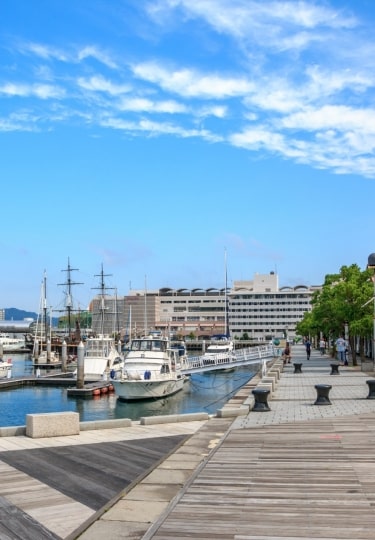The best things to do in Nagasaki inevitably include several sites associated with its atomic bombing in August 1945. Sadly, this tragedy is still the event for which this interesting city is best known.
There’s much more to Nagasaki beyond the tragedy that befell it at the end of World War II. Through the port here came the only foreigners and Christian missionaries allowed to visit Japan during its long isolation from 1603 to 1868. Exploring the city today, you can still see the strong influence they had, from Nagasaki’s historic areas to its churches.
Whichever era of Japanese history interests you, Nagasaki, with its highly individual culture, will be a revelation.
Remember at Nagasaki Peace Park
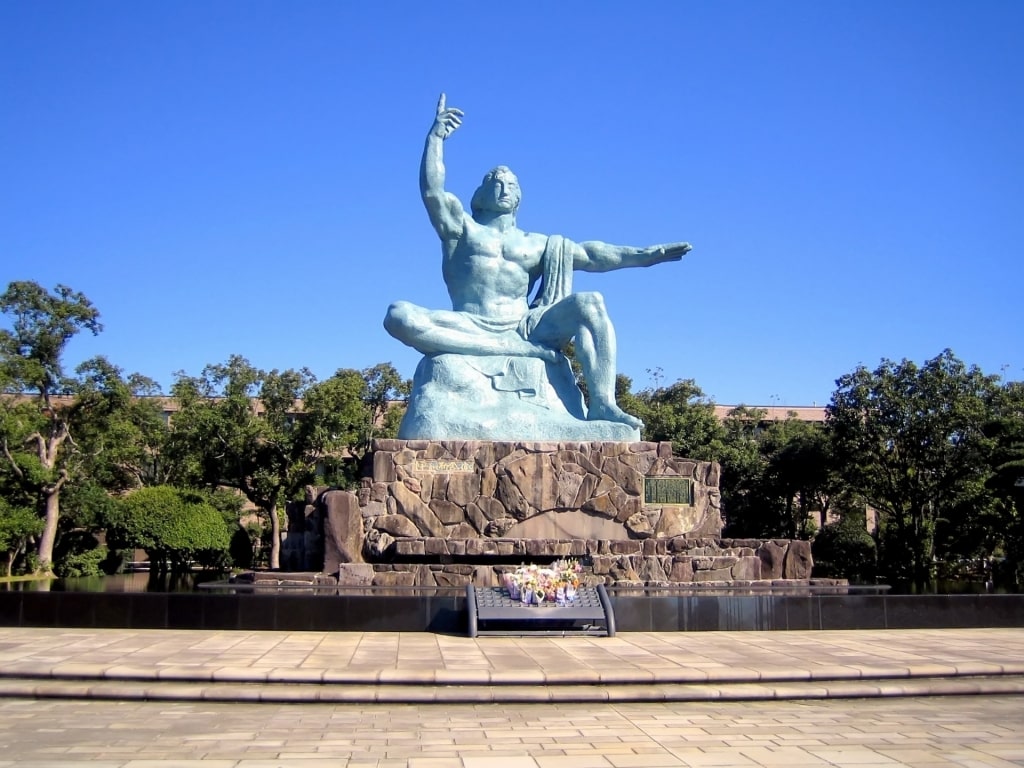
Nagasaki Peace Park
Nagasaki Peace Park is a memorial to those who died in the atomic bombing of World War II. A tranquil place near Urakami River, at its heart is the Peace Statue, a symbol of hope by local artist Seibo Kitamura.
The Fountain of Peace is closer to the river. It remembers those who died here searching for water after the bomb fell.
A poignant poem there, written by Sachiko Yamaguchi, vividly describes how she felt then as a nine-year-old girl. Nearby, peace memorials from around the world offer a hopeful vision for the future.
Stand at the Hypocenter
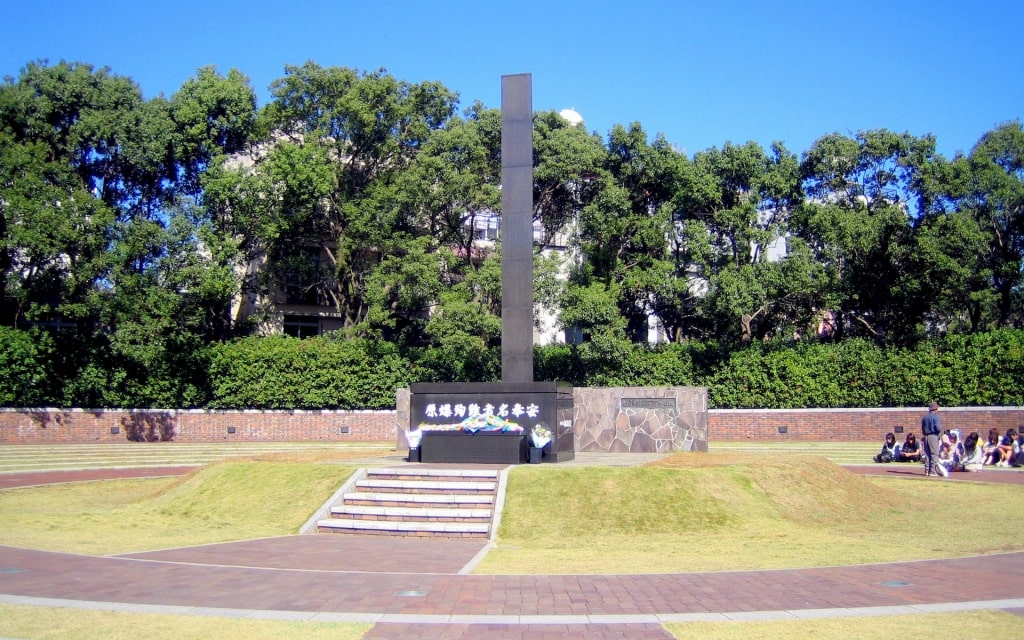
Hypocenter Park
Just south of the Nagasaki Peace Park is the Hypocenter Park. This marks the exact spot where Robert Oppenheimer’s “Fat Man”, the second bomb to fall on Japan, exploded on August 9, 1945.
The bomb exploded 1,650 feet above this “Ground Zero”, killing up to 40,000 people immediately. Many thousands died later from burns and the whole city was left in ruins.
It was thought that nothing would ever grow here again, but greenery sprouted within a month. Today, hundreds of the cherry blossom trees that Japan is known for serve as powerful symbols of hope.
Learn at the Atomic Bomb Museum
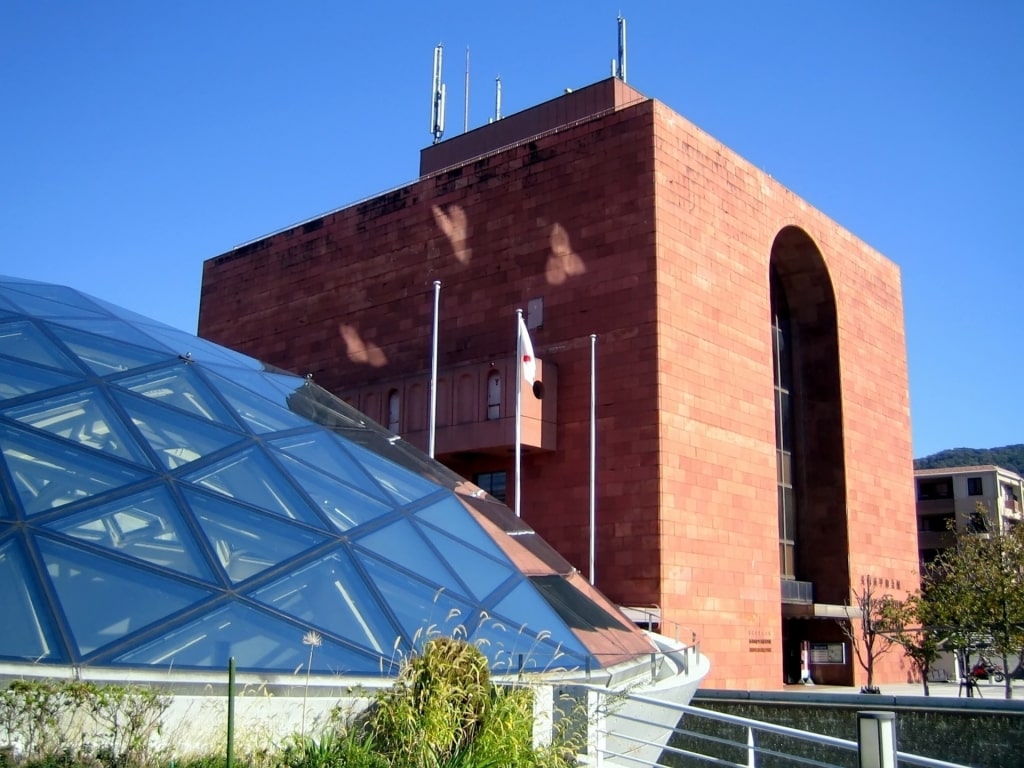
Atomic Bomb Museum
Five minutes’ walk from the Hypocenter Park is the Nagasaki Atomic Bomb Museum. This beautiful building focuses on the history of the bombing and its effect on Nagasaki.
There is a lot to see here but the English audio guide points out the highlights. One is the life-size cutaway model of the Nagasaki bomb, a compelling centerpiece.
Exhibits include uniforms worn by soldiers caught in the bombing. Eyewitness accounts, films, photos, and a model of the city in ruins also stir powerful emotions.
Take a Photo of the One-Legged Torii
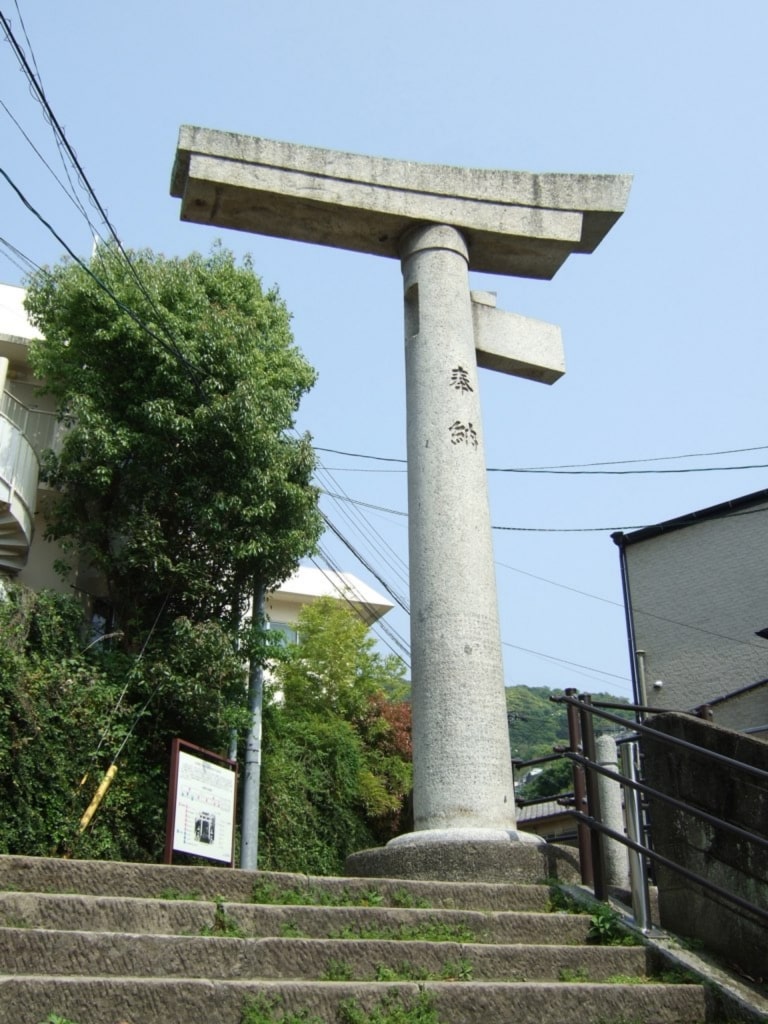
Sanno Shrine Photo by south on Flickr, licensed under CC BY-SA 2.0
The stone torii (“gate”) marking the entrance to Sanno Shrine is a Nagasaki landmark. Shielded by a hill from the bombing, centered only half a mile away, it somehow survived but with only one leg.
The blast did cause the crosspiece to crack and break. What survives is one-half of the original torii.
The gate is at the top of some steep steps with its fallen leg displayed nearby. Sanno Shrine, founded in 1638, was destroyed in the bombing, but two 600-year-old camphor trees in its grounds survived.
Spot the Bombed Trees
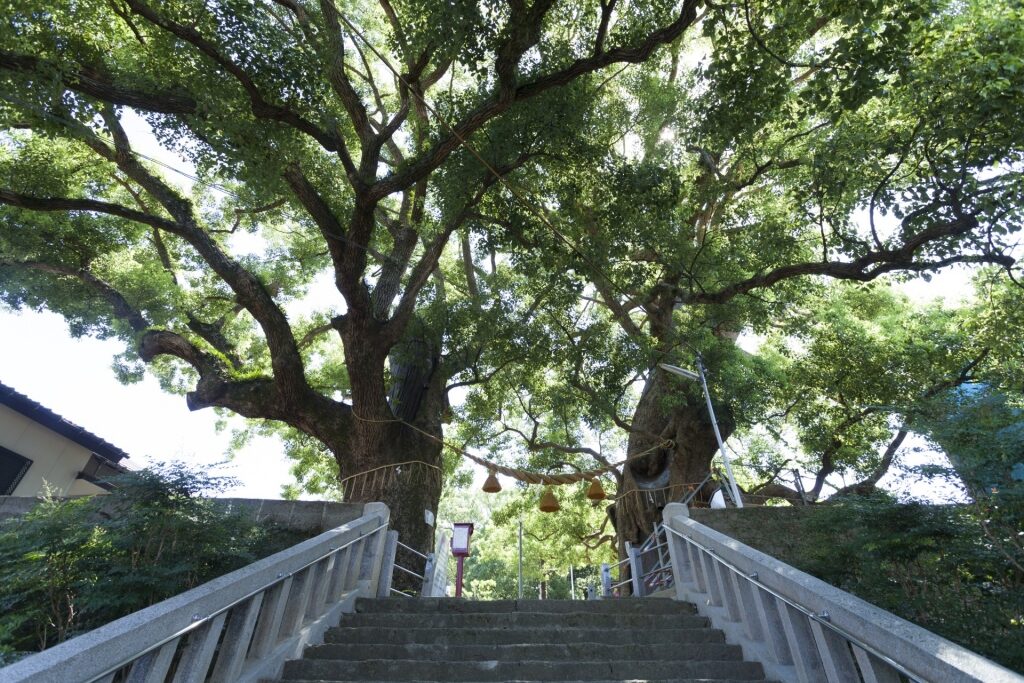
Bombed trees
The two camphor trees at Sanno Shrine are among 30 notable trees recognized as having survived the Nagasaki bombing. Although they were stripped of leaves by the blast, shoots started appearing within months.
While still bearing the scars of war, their recovery made such trees a powerful symbol for individuals who had lost loved ones and for the city as well. Known as hibaku jumoku (“atomic bombed trees”), they are carefully protected and mapped; just ask at any tourist office.
The rhododendron and Japanese white pine at the Atomic Bomb Museum are notable examples. Another is the fern palm at Fukusai Ji Temple.
Head Up Mount Inasa
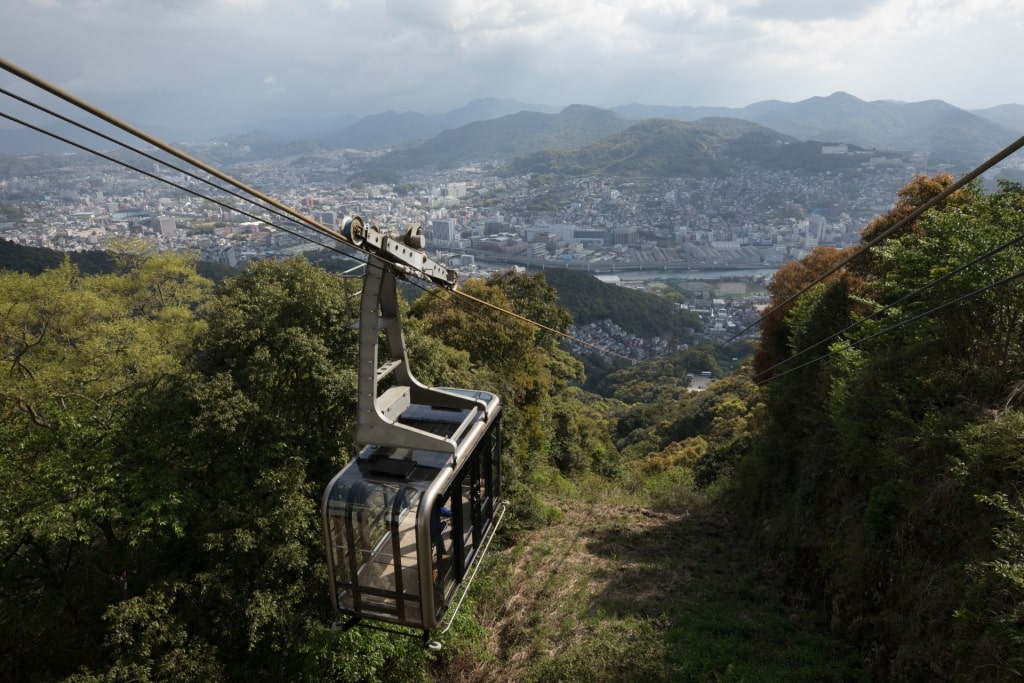
Cable car to Mount Inasa
The summit of Inasayama (Mount Inasa) has a wonderful view of Nagasaki. It has been voted one of the world’s top three nighttime views, alongside Hong Kong and Monaco, but is equally splendid during the day (and not as cold).
The easiest way to reach the summit is by the five-minute cable car ride. Check the visibility at the top with the staff at the base before buying a ticket.
Once up, you can shelter in the glass dome with an amazing 360-degree panorama taking in Nagasaki harbor. In spring, the cherry blossoms and thousands of azalea blooms in Inasayama Park are equally spectacular.
Peer at Spectacles Bridge
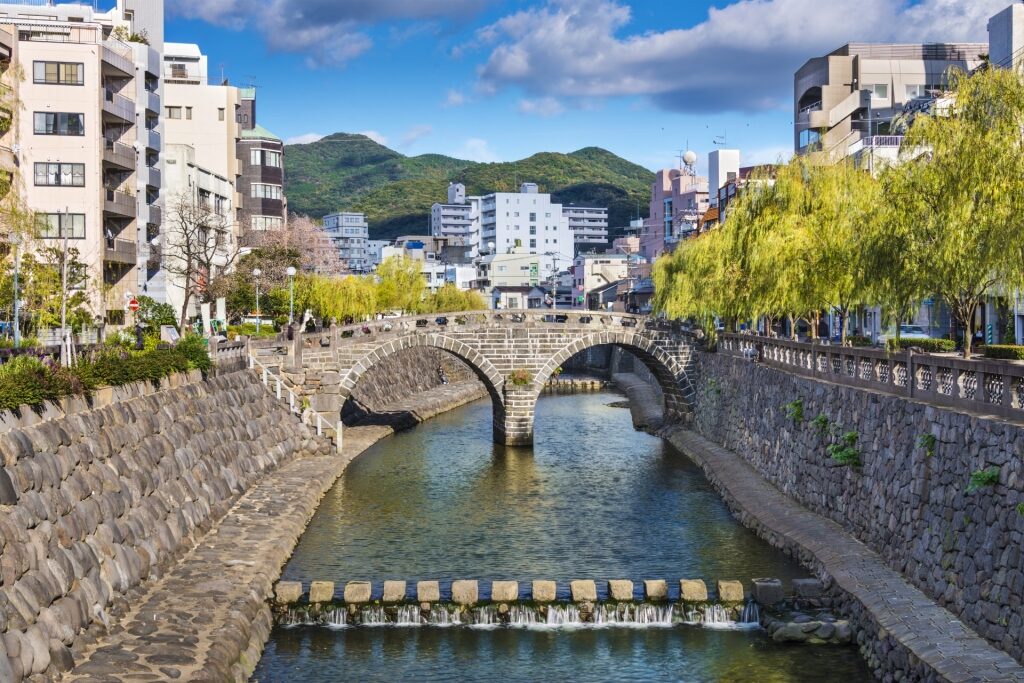
Spectacles Bridge
Meganebashi (Spectacles Bridge) is named for its distinct, two-arched appearance that form circles when reflected in the water. Built in 1634, it is pedestrian-only and walking across it has long been among the best things to do in Nagasaki.
As this is a popular spot for sightseeing, it is easy to find a café nearby from which to enjoy the view. You’ll also find good shopping, art galleries, and shrines.
As you walk the cobbled streets, look out for 20 hidden heart-shaped stones. Make a wish for eternal love on each one you find—the more the better, obviously.
Feed a Penguin
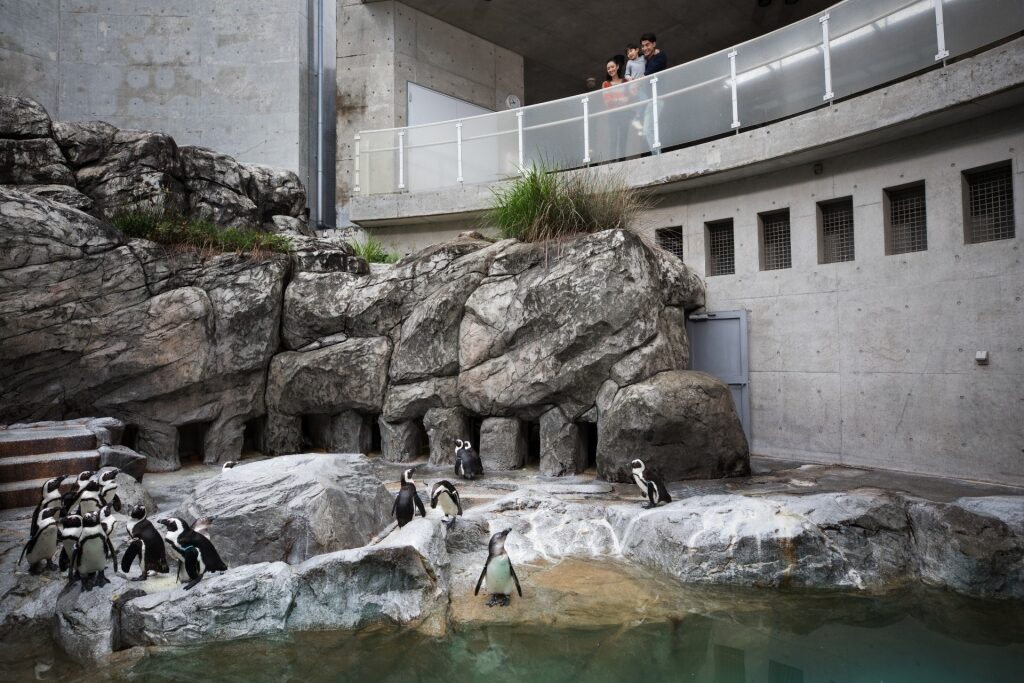
Penguin Aquarium
You might not expect to see penguins in Japan, but Nagasaki’s Penguin Aquarium has around 180. Nine of the world’s 18 penguin species are represented.
On weekends and holidays, there are special feeding events open to the public. On any day, you can see these flightless birds show off their speed and grace in the water of Tachibana Bay.
While penguins are the main attraction, this is still one of the best aquariums in the world, with many different fish and other sea life to see. A star attraction is the Mekong giant catfish, the world’s largest freshwater fish.
Experience Ancient Japanese Life
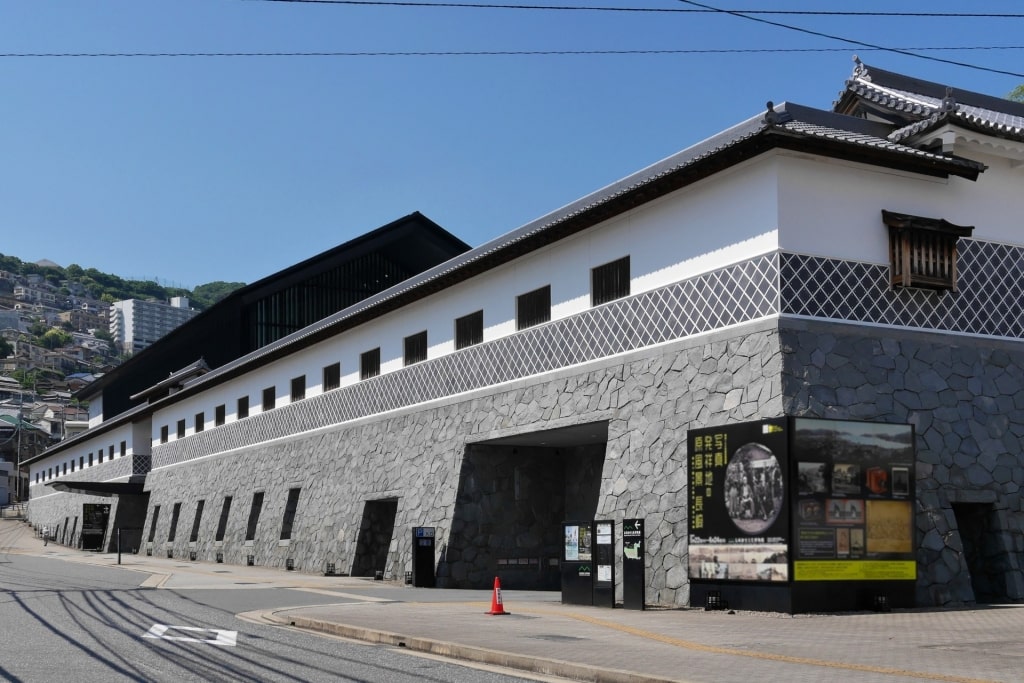
Nagasaki Museum of History & Culture Photo by Houjyou-Minori on Wikimedia Commons, licensed under CC0 1.0
The Nagasaki Museum of History & Culture focuses on the part played by the city in opening up Japan to the outside world. Historical documents, art, and other artifacts illustrate the history of the Sakoku (“Locked Country”) era from 1603 to 1868.
One key exhibit is the restored Nagasaki Magistrate’s Office. It gives you a real feel for official life in feudal Japan.
Other sections show what daily life was like in the city and the influence of technologies imported from Europe. While much is naturally in Japanese, an English audio guide is available.
Walk Up Dutch Slope
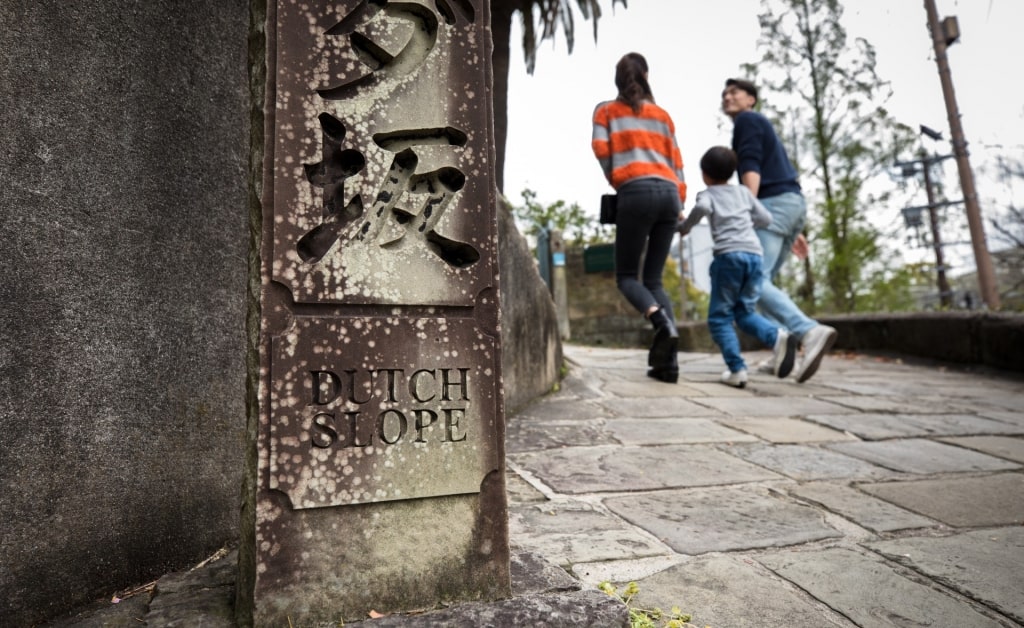
Dutch Slope
The Dutch Slope is a narrow, winding road on a hill with gorgeous views over Nagasaki Harbor. It takes its name from the Dutch traders who settled in this area in the late 19th century.
When Japan isolated itself from the world during the Edo period, only Portuguese, Chinese, and then Dutch traders were allowed. The old European houses from that time have been wonderfully restored here by the local government.
Many of the houses are now restaurants, cafés, or shops, and this is a great place to look for unusual souvenirs. In fact, the steepness of the road makes taking your time here an essential.
Wander Glover Garden
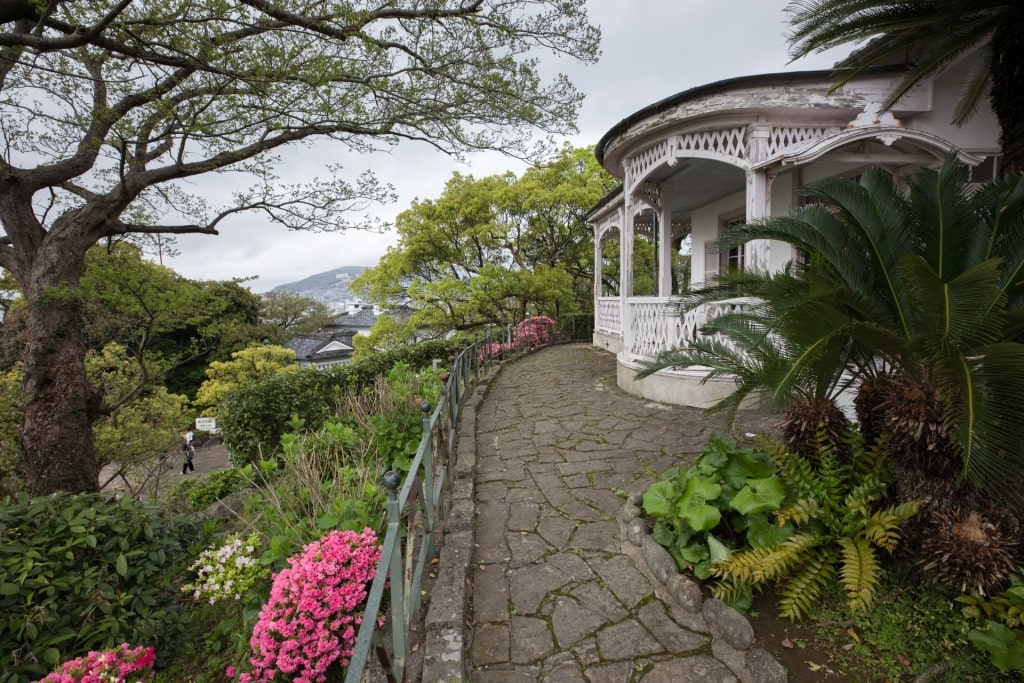
Glover Garden
This garden, spreading over a hillside, is named for Scottish trader Thomas Blake Glover. His house here is the oldest Western-style building in Japan.
It’s only one of nine houses in the garden belonging to European merchants of the time. Glover arrived in Nagasaki in 1859 at the age of 21 and lived in Japan until his death in 1911.
Initially a tea merchant, he then made his fortune by supplying arms to warring factions. Having supported the winning side, he became a key figure in the later industrialization of Japan.
Step Back in Time at Dejima
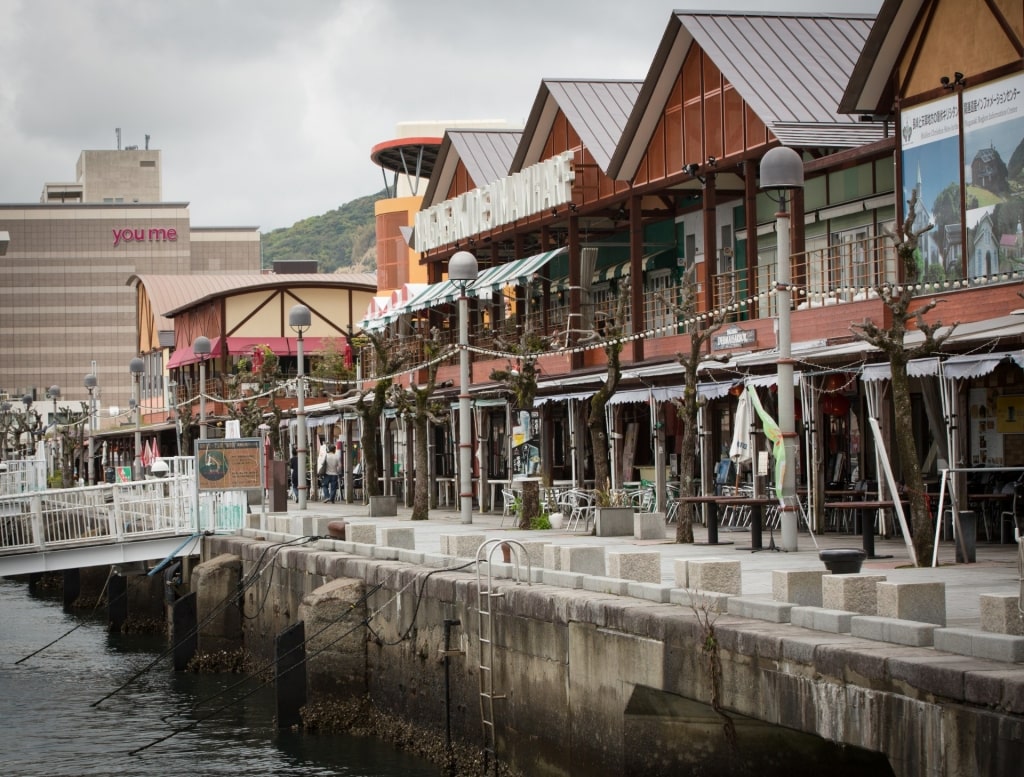
Dejima
After a failed Christian uprising in 1638, Japan was closed off to all Europeans except Dutch traders. These remaining Westerners were only allowed to live on Dejima, a tiny island in Nagasaki Bay, known as one of the most beautiful places in Japan.
The tiny fan-shaped island was built on reclaimed land. It was the only point of contact with Europe for nearly 200 years.
Dejima has now been faithfully restored to how it would have looked in the early 19th century. Learn more about this strange period of Japanese history by strolling its streets, visiting its houses, and exploring its storehouses.
Indulge in Castella
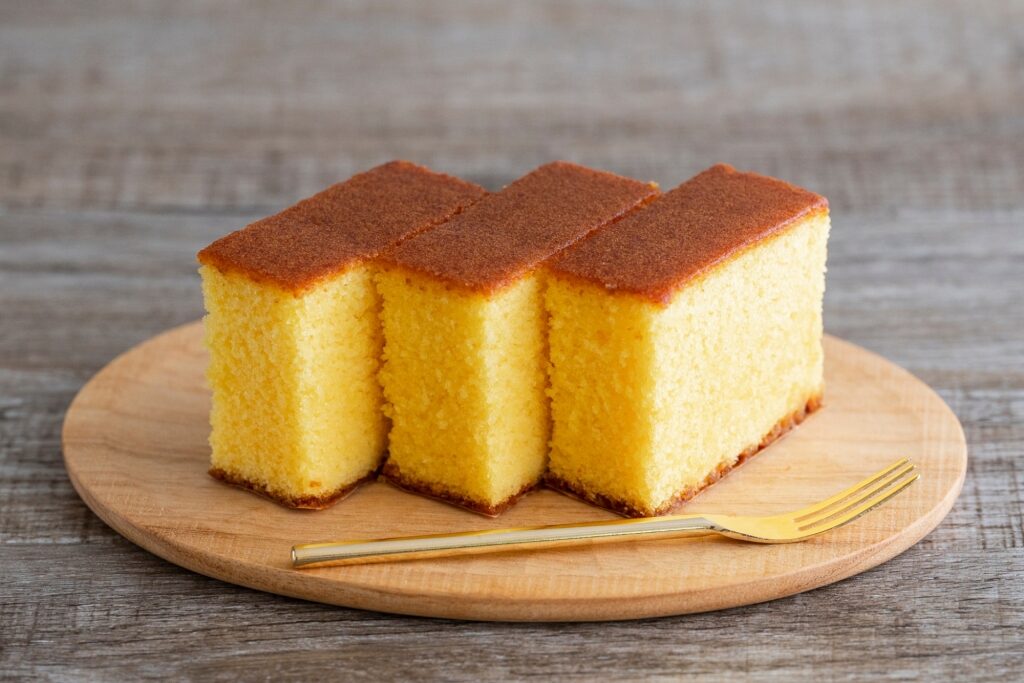
Castella
When the first Portuguese missionaries landed in Nagasaki in 1571 they brought sugar with them. While Portuguese muskets were essential to the reunification of Japan, sugar had a less violent transformative effect.
A “Sugar Road” starting on Dejima island carried sugar to all parts of Japan by road and boat. In Nagasaki, a Portuguese cake recipe using flour, egg, and sugar and adapted to Japanese tastes was an early success.
This castella cake is still a staple for afternoon tea and even breakfast. Buy it made from a 400-year-old recipe at Fukusaya bakery downtown, or in the museum shop at Oura Cathedral.
Shop at Hamamachi Arcade
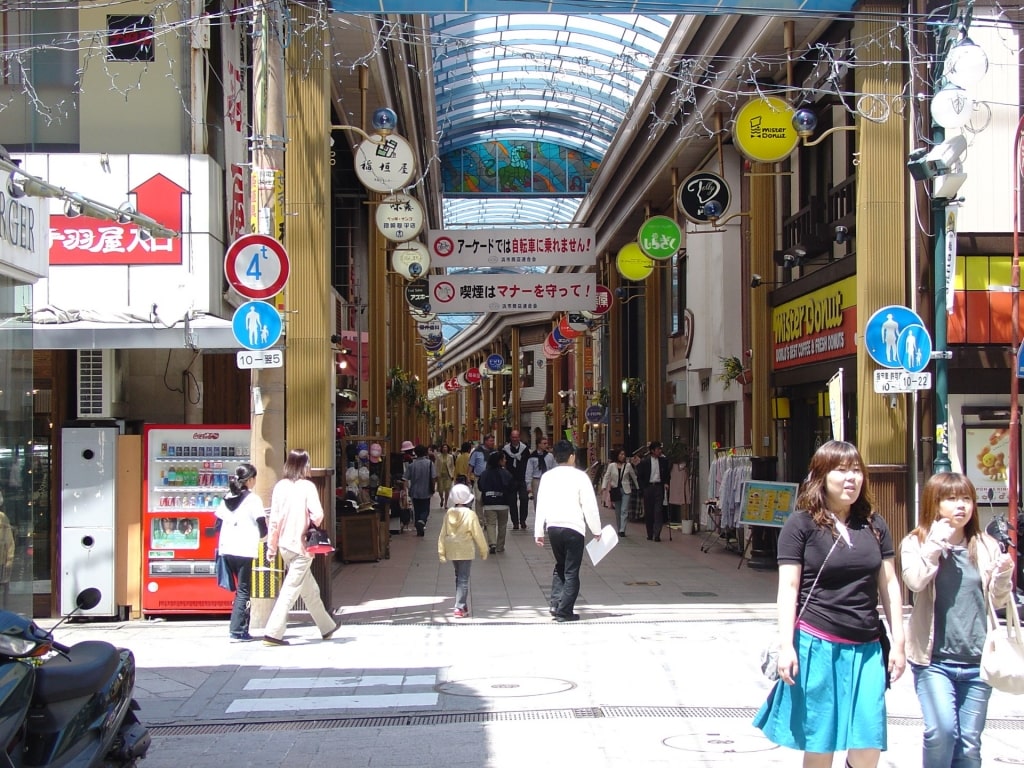
Hamamachi Arcade Photo by Mike B in Colorado on Flickr, licensed under CC0 1.0
To glimpse the life of local people in Nagasaki, drop into Hamamachi Arcade.
Essentially a shopping street protected from the weather by a glass roof, its upper floor has plenty of cafés for great people-watching.
You will find around 700 shops here, including two large department stores. You’ll see some familiar brands but many not. Specialty stores for souvenirs include a paper shop and one for local pottery. This is also a great place to eat castella, Nagasaki’s signature cake.
Read: Best Things to Buy in Japan
Remember the 26 Martyrs
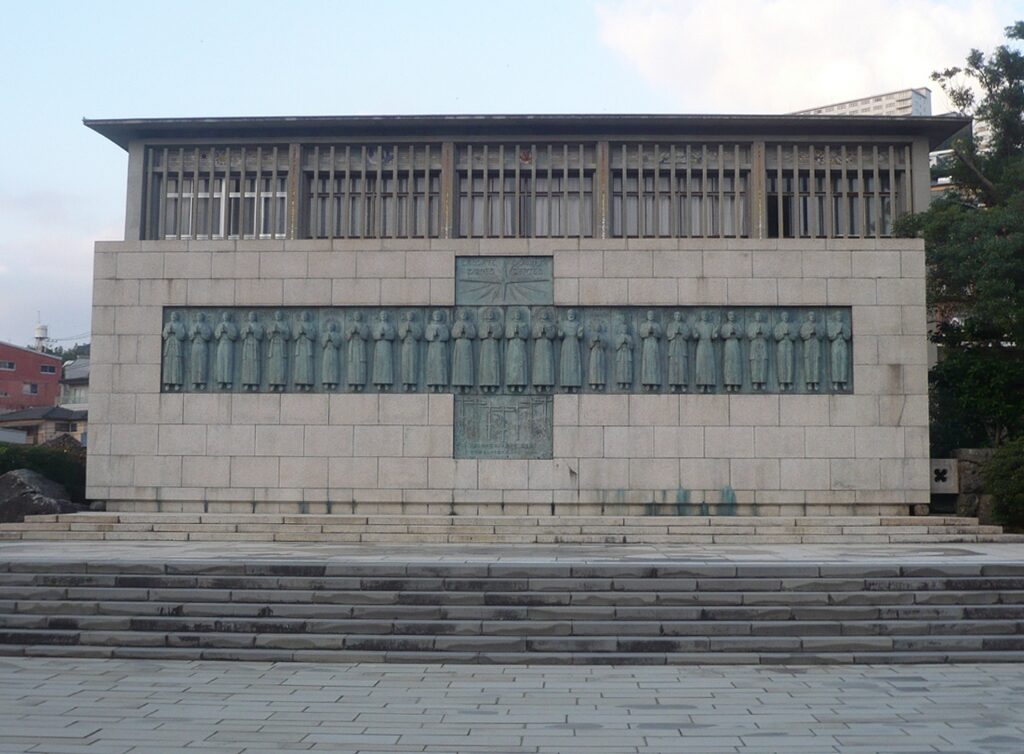
26 Martyrs Museum Photo by Alex Tora on Wikimedia Commons, licensed under CC BY-SA 3.0
In 1597, 26 Catholics, including foreign missionaries and their Japanese followers, were crucified in Nagasaki. This horrific event was intended as a warning to fellow Christians to abide by Japanese laws at the time prohibiting missionary activity.
Many thousands of martyrs were to die in the years ahead before their religion was accepted. All these deaths are commemorated in a museum that also tells the history of Christianity in Japan.
The 26 Martyrs Museum has documents, statues, and other artifacts, as well as a memorial on its outside wall. It stands on a small hill, with lovely views over the city towards Oura Cathedral.
Pray in Ōura Cathedral

Ōura Cathedral
The oldest surviving Christian church in Japan, Oura is dedicated to the 26 Martyrs crucified in 1597. It was built in 1864 as a wooden church, replaced a few decades later by the present brick gothic design.
Its opening encouraged thousands of Japanese Christians, who had hidden their beliefs since the 1630s, to reveal themselves. The ban on Christianity in Japan was not lifted until 1873, a story told in the onsite museum.
The church’s most notable feature is the original stained glass windows imported from France. It was the first Western-style building in Japan designated as a national treasure.
Visit Urakami Church
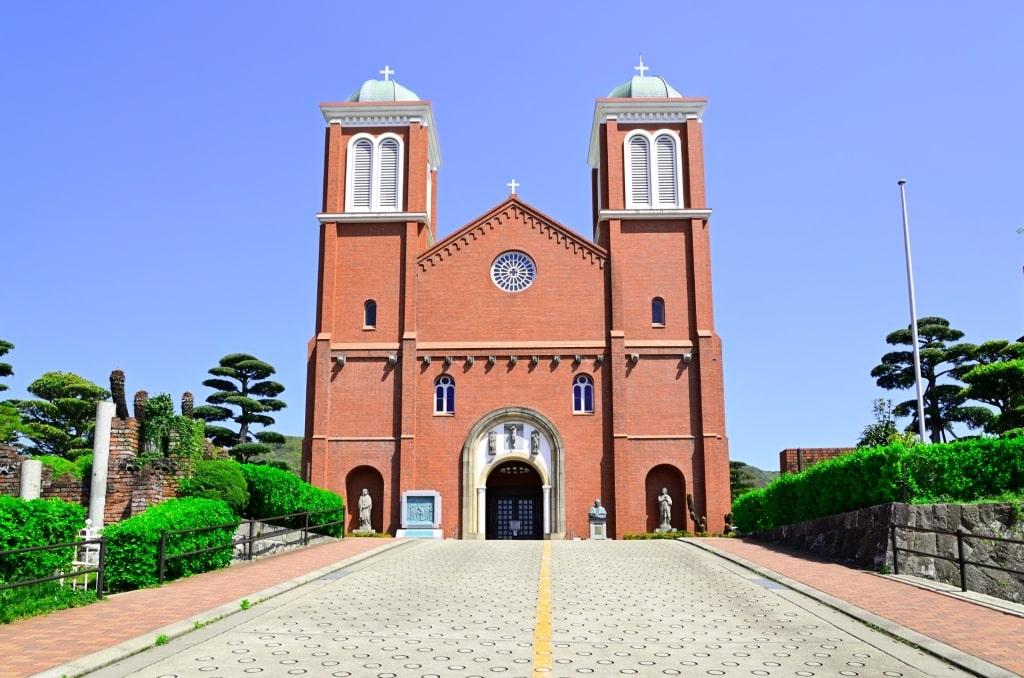
Urakami Church
This red-brick European-style church was built in 1895 on a former “picture trampling” site. This is where those suspected of being secret Christians were forced to walk over biblical images.
However, it’s now more notable for being left in ruins after the Nagasaki bombing of August 1945. Outside, you can see several blast-blackened statues that survived.
The bell tower is another survivor, along with a wooden figure of the Virgin Mary. One of the church bells was also dug out of the ruins and rung for Christmas in 1945.
See Suwa Shrine
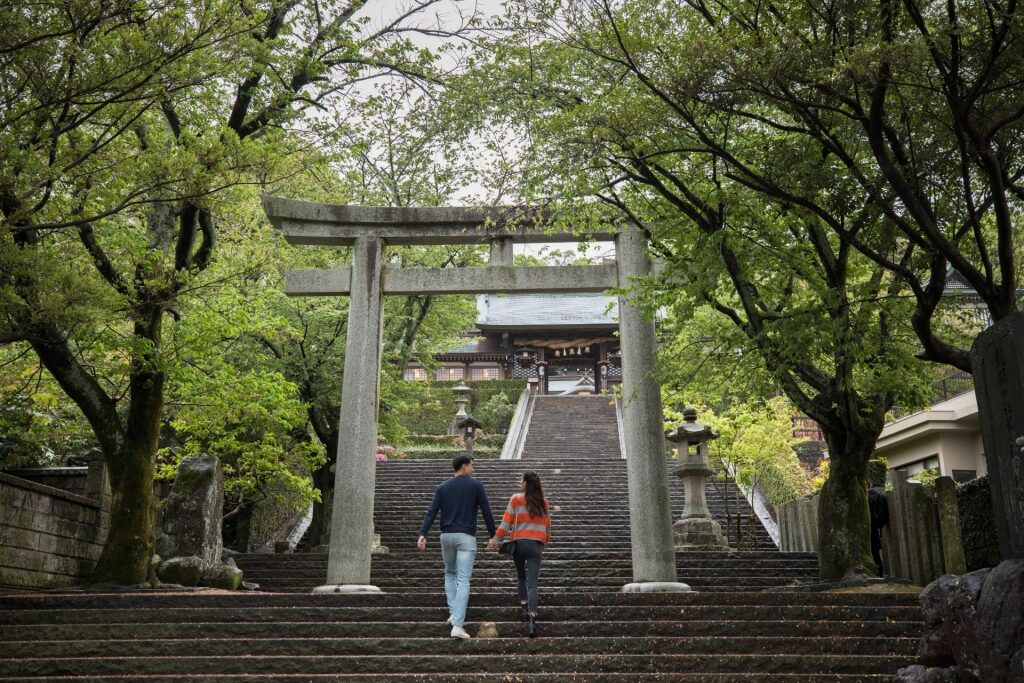
Suwa Shrine
Suwa Shrine was built in the early 1600s near Mount Tamazono to counter the large Christian influence on Nagasaki at the time. Around 1683, it was moved to its current location higher up the mountain.
The shrine is reached by 277 stone steps so wear comfortable shoes to explore it. Its sheltered setting saved it completely from the 1945 bomb blast, unlike the city’s Christian churches.
This was taken as a propitious sign, reinforcing Suwa’s reputation as a leading Shinto shrine. Its priests were central in spiritual purification rituals during the city’s rebuilding.
Explore Shinchi Chinatown
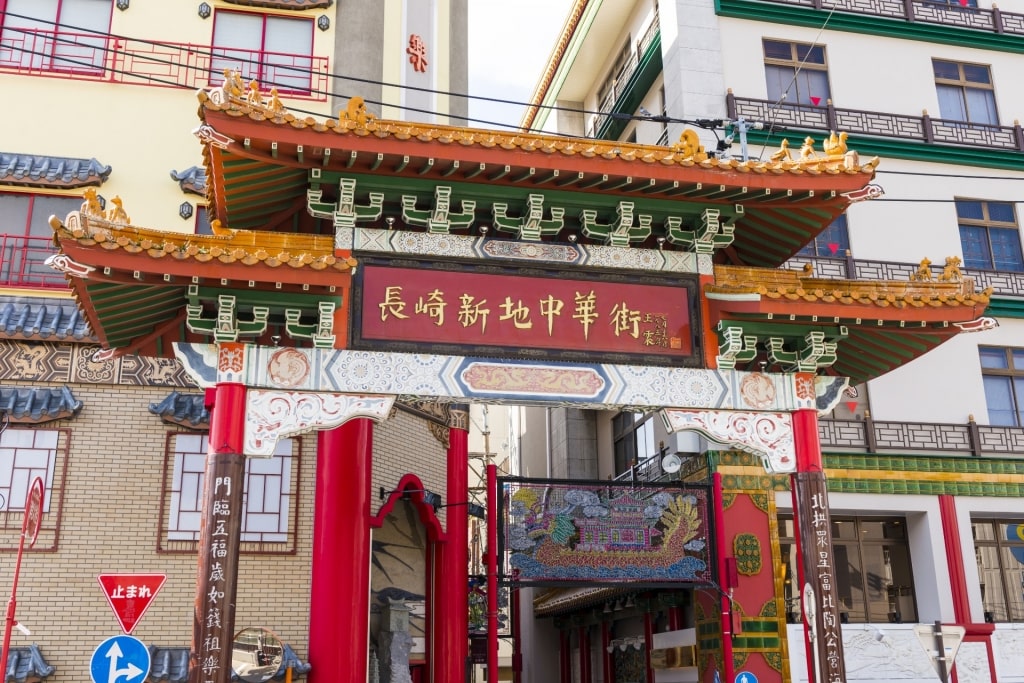
Shinchi Chinatown
It may seem odd to visit a Chinatown while visiting Japan, but this is the oldest in the country. Covering one city block, it’s the best place to eat famous local, Chinese-influenced dishes, such as champon and sara udon.
Alongside the Dutch, the Chinese were the only outsiders allowed into Japan during its period of isolation. While the Dutch had Dejima, the Chinese had a similar artificial island called Shinchi (”New Land”).
More reclamation since has made the district landlocked, but its Chinese characteristics remain. One of the best things to do in Nagasaki is to browse the shops, visit the photogenic temples, and eat Chinese food.
Slurp Champon & Sara-Udon
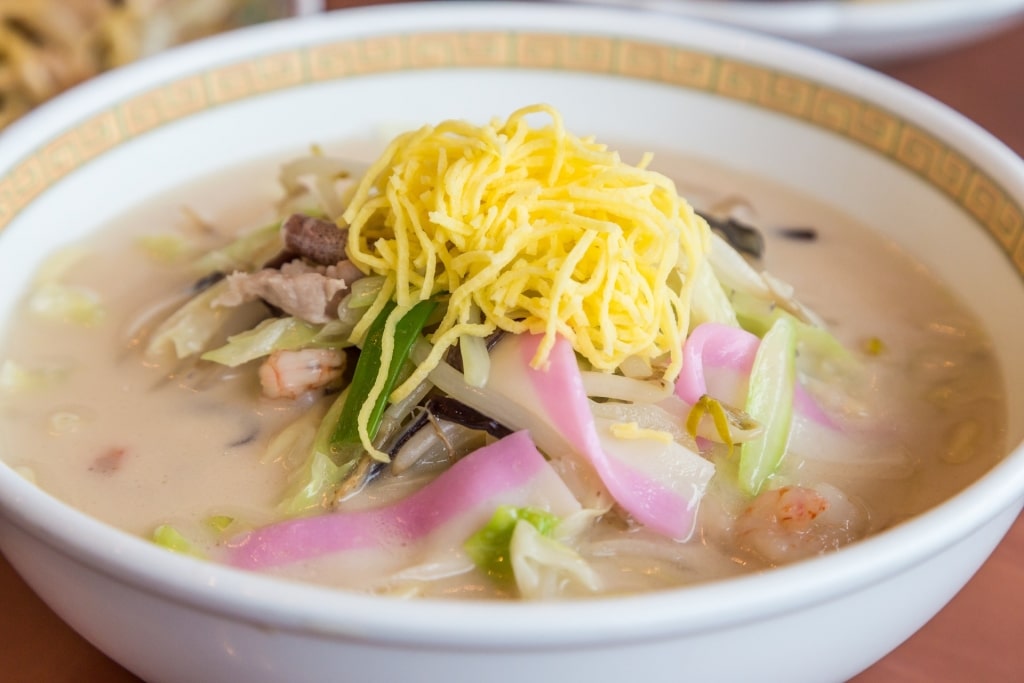
Champon
Everywhere in Japan is proud of its local culinary specialities, even if Nagasaki’s two most famous show Chinese roots. You can’t leave without trying champon and sara-udon.
Champon is a noodle soup with fried pork, seafood, cabbage, bean sprouts, and ramen. Sara-udon is a Cantonese-style fried noodle dish with similar toppings to champon: fried pork, seafood, cabbage, and bean sprouts.
The best place to try these is in Nagasaki’s Chinatown, especially the five-story restaurant Shikairou. Founded in 1899, it claims both dishes originated here to feed impoverished Chinese students and has a museum to prove it.
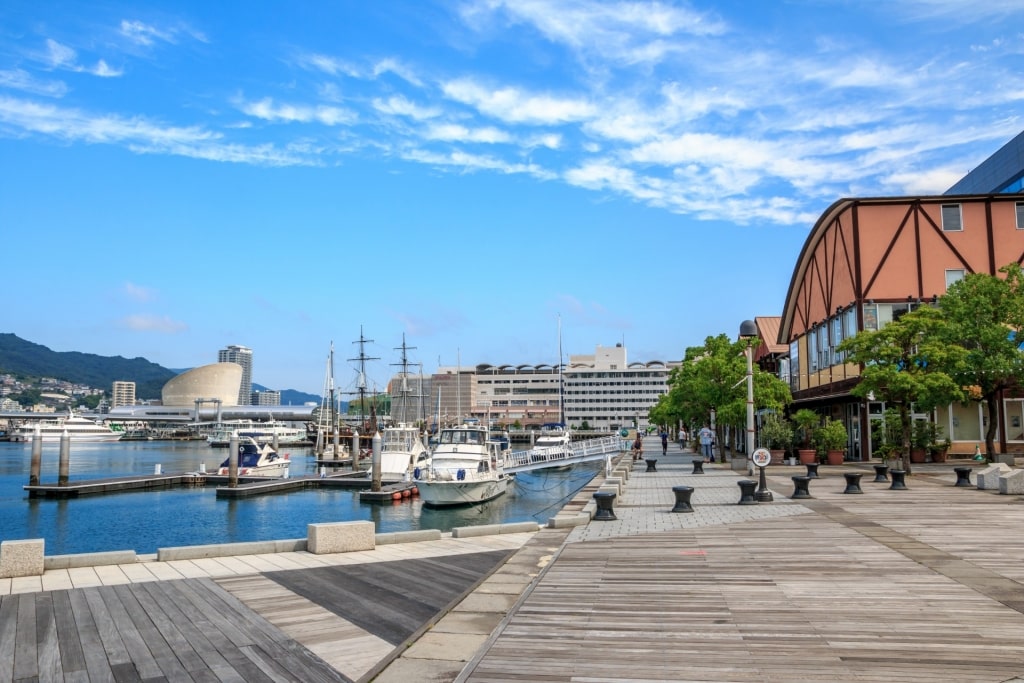
Dejima
Has this guide to the 20 best things to do in Nagasaki inspired you to visit? Then browse Celebrity’s cruises to Nagasaki to find the perfect cruise for you and your loved ones.
